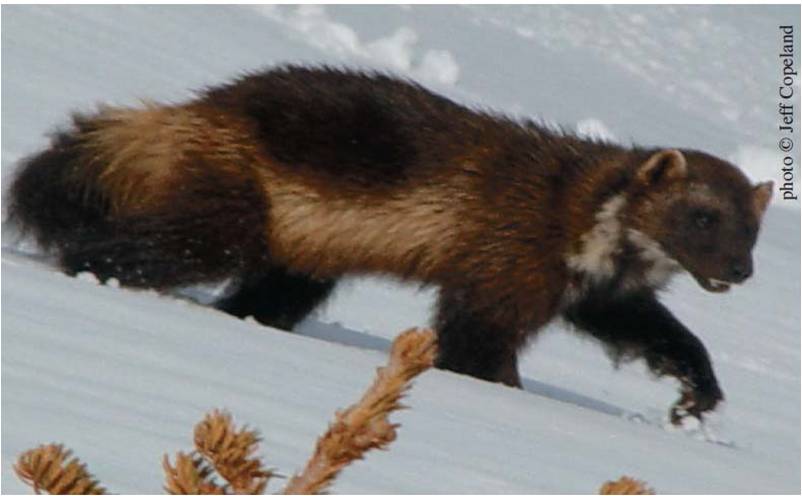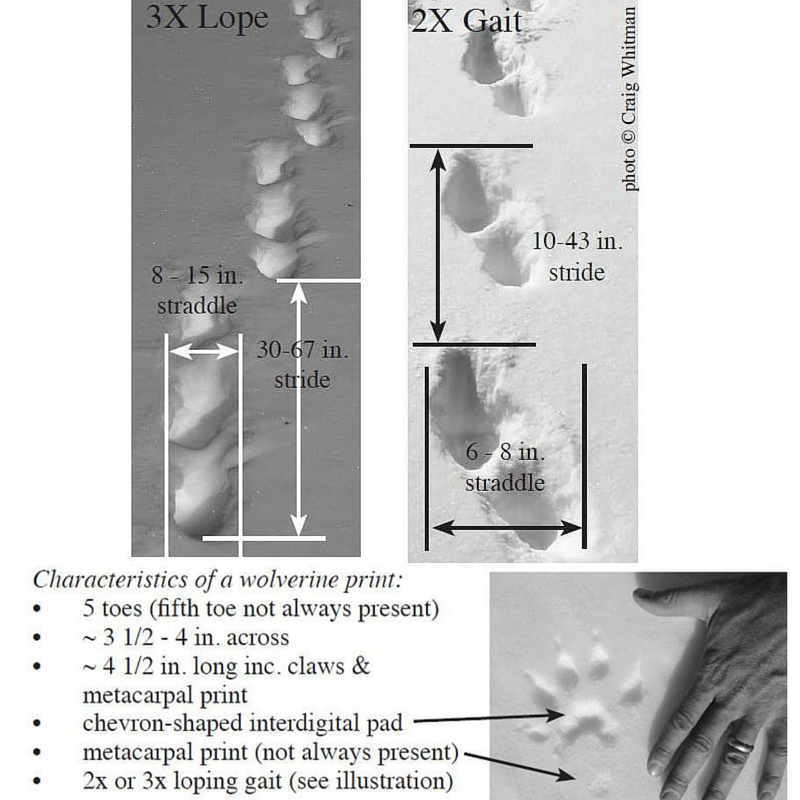Wolverines (Gulo gulo) are the largest terrestrial member of the weasel family. Wolverines are naturally rare and persist at extremely low population densities. Very few individual wolverines have been detected in Wyoming, including in Grand Teton National Park and Yellowstone National Park. The current status and distribution of wolverines in Wyoming is largely unknown, and there are vast tracts of potential wolverine habitat in the high country of the state. Formal wolverine surveys and research have been applied in the Teton Range and Yellowstone National Park, but outside of these areas, detections are scarce.
Recent research has shown that the worldwide distribution of wolverines is closely tied to the distribution of persistent late spring (April and May) snowpack. Females dig dens in deep snow to birth and raise young until they are old enough to venture out of the den. Year round, wolverines tend to use higher elevations where snow persists and temperatures stay cool, typically above 8,000 feet.
Wolverine conservation has been restricted due to a lack of understanding of the fundamental ecology and distribution of this native species. Recent research is beginning to improve this situation, but more work is needed to understand which habitats are occupied and to understand demographic measures of population persistence.
Please help us develop a better understanding of Wyoming’s wolverine population by reporting wolverine observations and tracks using the form below, emailing Jason Wilmot of the United States Forest Service, or emailing the Jackson Hole Wildlife Foundation directly. The images below showing how to estimate track gait measurements may be of help in differentiating wolverine tracks from other species.
Observations and comments can be emailed to the Jackson Hole Wildlife Foundation at info@jhwildlife.org.
Spotted a Wolverine?
Research is being done by Wyoming Game and Fish, Bridger-Teton National Forest, and other agencies to learn more about wolverine distribution in Wyoming and adjacent states.
If you have seen a wolverine, or any animal that may be a wolverine, or even any evidence of a wolverine such as tracks in the snow, fill out the simple form below, or email the Jackson Hole Wildlife Foundation directly.



